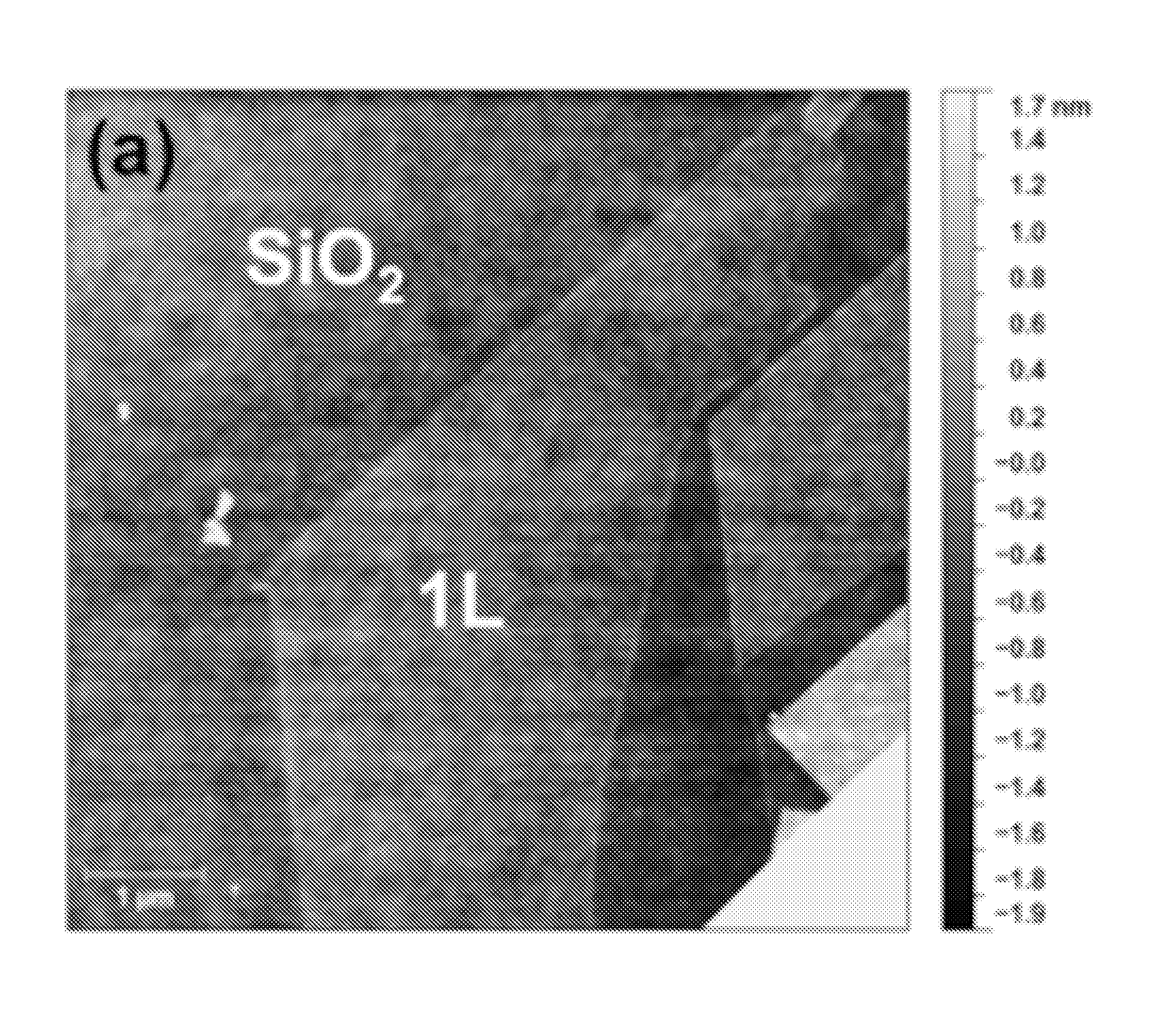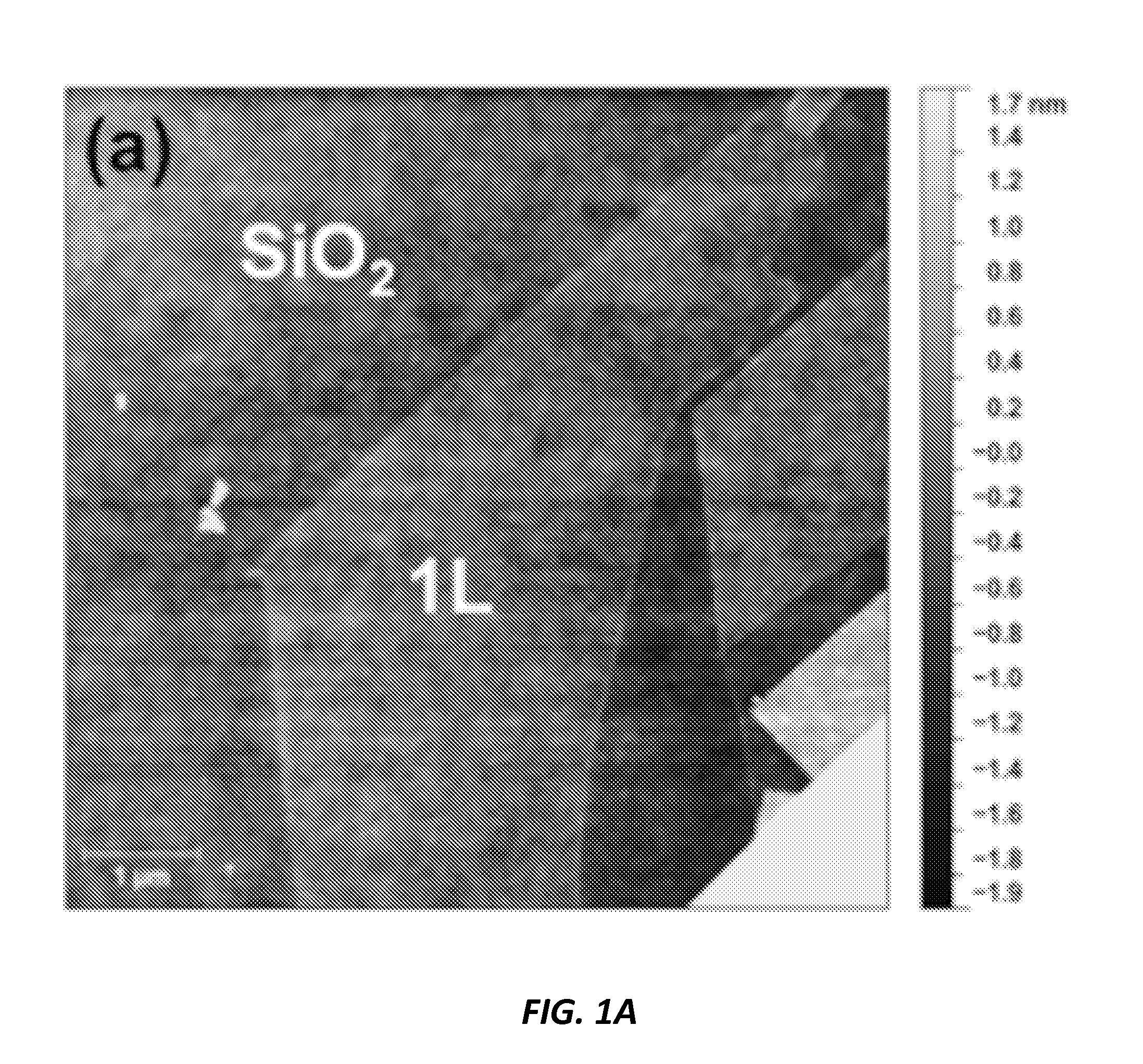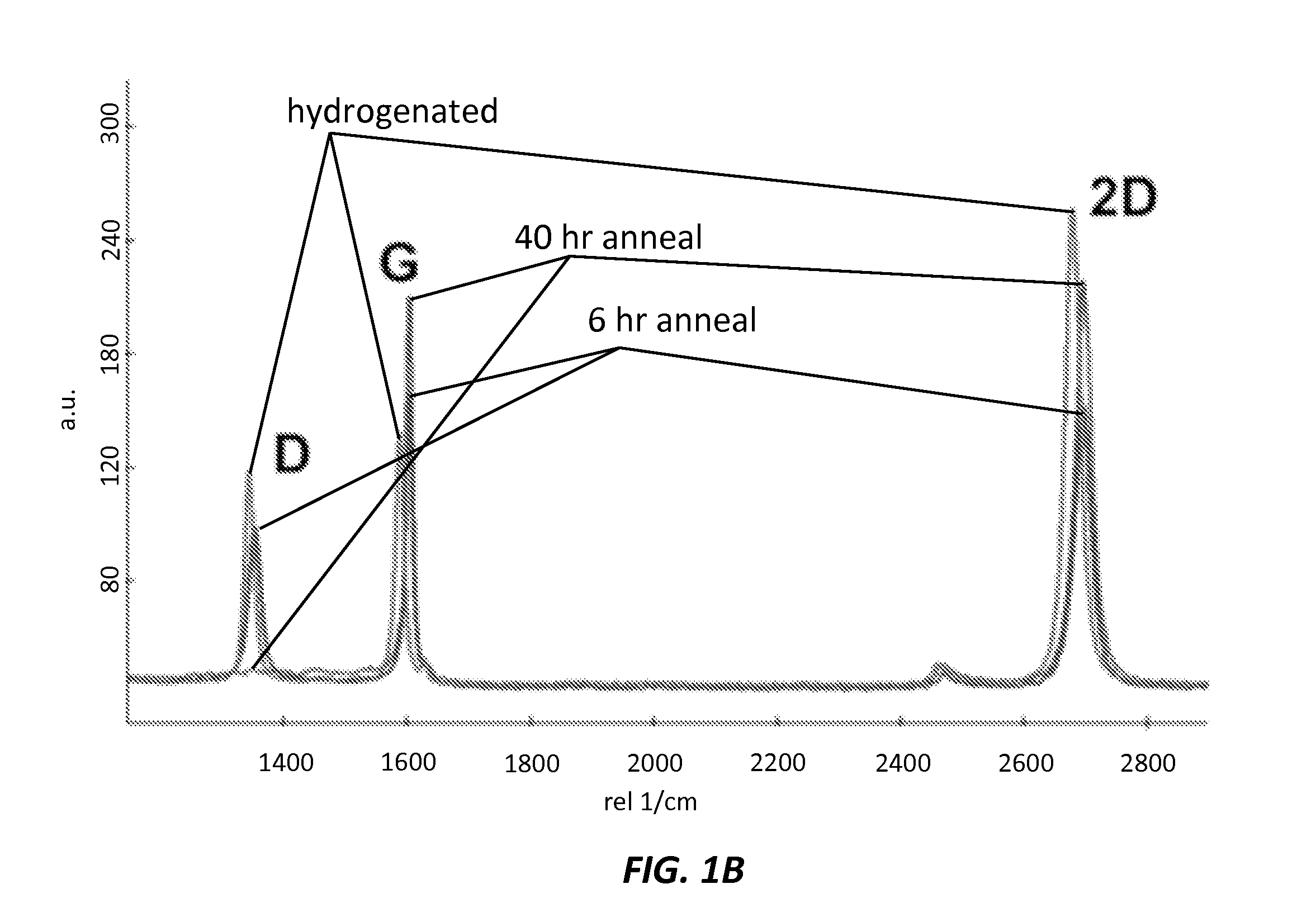Functionalized Graphene-Pt composites for fuel cells and photoelectrochemical cells
a graphene-based, fuel cell technology, applied in cell components, polycrystalline material growth, crystal growth process, etc., can solve the problems of sluggish orr, high catalyst mass loading, affecting the widespread adoption of these devices, etc., to promote the loss of methyl groups
- Summary
- Abstract
- Description
- Claims
- Application Information
AI Technical Summary
Benefits of technology
Problems solved by technology
Method used
Image
Examples
Embodiment Construction
[0021]The current invention uses controlled radio-frequency hydrogen plasma to treat graphene and then epitaxially grow various nanocrystals and dielectric thin films using Atomic Layer Deposition, while retaining the graphene's intrinsic properties.
[0022]The current invention is used in energy conversion and storage devices, such as fuel cells, solar cells, and photoelectrochemical water-splitting cells; for electronic devices that require the use of dielectric spacers and top gates; and for thermal transport devices. Further, the invention provides the ability to build hierarchical chemical structures on top of a graphene substrate for biological sensing and diagnostics, and chemical sensing.
[0023]This invention may solve crucial commercial problems in the near future, as graphene materials enter the industrial realm in areas such as fuel cells, electronics and sensors.
[0024]Existing methods of using graphene for the above-mentioned purposes generally require wet chemistry, such a...
PUM
| Property | Measurement | Unit |
|---|---|---|
| diameters | aaaaa | aaaaa |
| diameters | aaaaa | aaaaa |
| catalytic properties | aaaaa | aaaaa |
Abstract
Description
Claims
Application Information
 Login to View More
Login to View More - R&D
- Intellectual Property
- Life Sciences
- Materials
- Tech Scout
- Unparalleled Data Quality
- Higher Quality Content
- 60% Fewer Hallucinations
Browse by: Latest US Patents, China's latest patents, Technical Efficacy Thesaurus, Application Domain, Technology Topic, Popular Technical Reports.
© 2025 PatSnap. All rights reserved.Legal|Privacy policy|Modern Slavery Act Transparency Statement|Sitemap|About US| Contact US: help@patsnap.com



